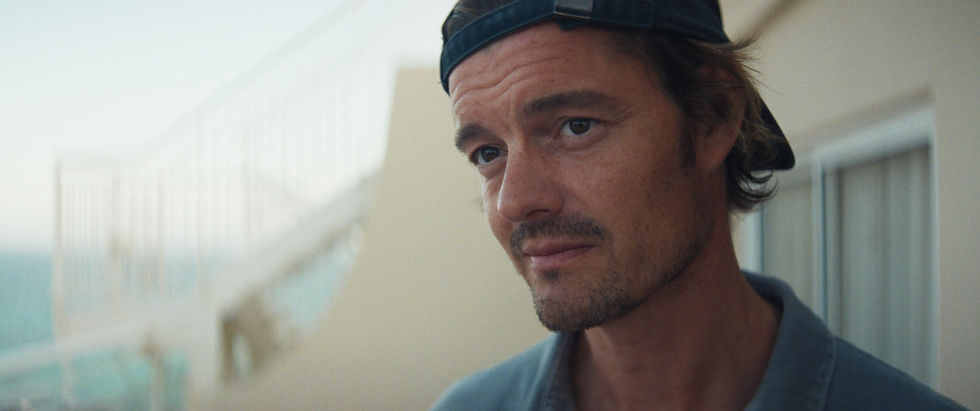MARIE ANTOINETTE STYLE
- Kathleen Bondar

- Sep 29
- 3 min read
Updated: Oct 12
VICTORIA AND ALBERT MUSEUM
CROMWELL ROAD
LONDON SW7 2RL
UNTIL 22ND MARCH 2026

REVIEW by KATHLEEN BONDAR
Marie Antoinette’s favourite artist and friend, the talented and renowned beauty, Elizabeth Louise Vigee Le Brun, painted this celebrated, last Queen of France who married Louis XVI in 1770 at the tender age of fourteen. Le Brun’s 1778 portrait is on show at the V&A’s autumn/spring, fashion blockbuster Marie Antoinette Style accompanied by the artist’s flattering quote.
Perhaps more pertinent is a quote from Marie Antoinette to her daughter Marie Theresa “All eyes will be upon you.” The quotation sits beside an animated portrait of Marie Antoinette as Dauphine of France aged 15 by Duplessis (1771). Eyes move and lips smile imperceptibly, charmingly and rather strangely, bringing the icon to life.
More than anything this immersive exhibition explores the enduring style of Marie Antoinette's dresses accompanied by fabric designs, jewellery, furniture and furnishings, which have been a lasting influence - with loans from the Château de Versailles.
The V&A are a dab hand at curating fashion exhibitions and this homage to eighteenth-century, French fashion a la Marie Antoinette is indulgent. Walking through a maze of ornate “wedding cake” dresses in glass cages (with oil paintings, chandeliers, tapestries and diamonds to set the scene) is quite intoxicating. It’s rather like a Madame Tussauds of eighteenth-century costumes in a Kew Garden’s glass house (without the tropical plants) beautifully lit at night.
During Marie Antoinette’s reign, dress styles can be categorised according to three dominating countries – Robe a la Francaise (the sack back gown), Robe a la Polonaise (skirts looped at the sides) and Robe a L’Anglaise (fitted pleats at the waist) with some Creole and Turkish influences too. Some of the dresses are original C18. Some are replicas. There are tiny, exquisite shoes (including the Queen’s own silk slippers), the Domino (cape), the Brunswick (hooded jacket), Alencon & Argentan lace and leopard/ermine animal prints.
Marie Antoinette was besotted with English style. There was a period in the 1780s when all things English swept France. Marie Antoinette indulged her Anglomania at the palace of Versailles in the petit Trianon gardens with meandering English gardens and rustic village hamlets. The Queen’s bucolic passion can be seen in Toile de Jouy prints such as The Cherished Sheep 1785, The Drinking Trough 1792 and The Garden of Love 1790. Each hanging sits side by side at the exhibition, a tribute to the Queen’s renowned rural romanticism.
Then there are the jewels - diamonds were certainly Marie Antoinette’s best friend. The Sutherland Diamonds and the Anglesey Diamond negligee necklace worn by Queen Victoria and Queen Elizabeth II respectively are taken from Marie Antoinette’s stolen jewellery (known as the diamond necklace affair 1784).

With the demise of the French Royalty, revolutionary propaganda was distributed depicting the Queen in animalistic guises and with misogynistic overtones. Designers switched from pleasing royalty to commemorating the rebellion with a range of revolution memorabilia. A Bastille fan marking the storm of the prison became a must-have fashion accessory. Sevres porcelain factory moved from beautiful artefacts beloved by the Queen to patriotic cups and saucers honouring the revolutionaries. There is a replica, plain linen undergarment worn by Marie Antoinette awaiting her execution - a stark contrast to her previous finery.
Posthumously, Marie Antoinette was memorialised not least by Empress Eugenie of France (m. Napoleon III 1853). A foreign-born consult like Marie Antoinette, Eugenie romanticised the late Queen, copying her dresses for special occasions. In 1866 she attended a masquerade ball dressed as Marie Antoinette at the Tuileries Palace.

Eugenie was not alone in taking inspiration from Marie Antoinette. The exhibition ends in a flourish with dozens of contemporary, “meringue” dresses and bodices to die for. Designers worldwide continue to reference Marie Antoinette’s style including Manolo Blahnik’s shoes copied for use in Sofia Coppola’s film Marie Antoinette and Christian Dior’s Haute Couture Collection by John Galliano 2006 which evoked the French Revolution using a corset dress from a painting of Marie Antoinette at the V&A.
Instagram: @vamuseum
Facebook:
@VictoriaandalbertMuseum
Tiktok: @vamuseum








